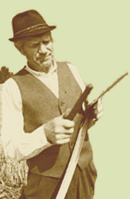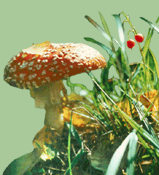The higher-level classifications of the kingdom Animalia
Marko Prous and Ivar Puura try to guess the process of the phylogeny of animals and propose new names for the new classifications. A phylum has traditionally been the highest division in the classification of the kingdom Animalia. Phyla have been differentiated based on general specialization of body plan (Bauplan). As we can not exactly determine the process of evolution, every phylogenetic tree is just a hypothesis and is dependent on the rules, which it is built upon. In the current discussion 30 phyla are differentiated and several of these are briefly described in the article. Several illustrations give the idea of the overwhelming diversity of creatures in the kingdom Animalia.
The restless North-Western coast of Estonia is in constant change
Arne Kivistik takes the reader to the North-Western coast, where landscapes evolve on their own. The coastal areas are full of sand, dunes and beach ridges that create unique lined landscapes. The author also looks at the short life of lakes of the region: most of them have evolved from sea bays, and many of these have now become a terrain. Old maps give us interesting notions of such processes.
Estonian Nature enquires
Mart Külvik explains the difference between a usage management plan and visitor management plan of protected areas.
Ursula Toom writes about the need of our schools for rock study collections.
The human search: spirituality, religion and (natural) sciences
Marko Uibu and Kristel Kivari observe what Estonians consider sacred in their spiritual world and in nature. Estonians are not keen on traditional religions, but a lot of people believe in spirits or in people with extraordinary mental endowments. Estonians still largely see themselves as people of nature, but the objects of holiness have somewhat changed. The authors look at the relationships between spirituality and science, marking that true science remains far from the popular new spirituality.
The brush and stumps are out in the open
Jaan Tammsalu adds a Lutheran point of view to the previous article.
Recovery through spirituality in theory and practice
Ivar Puura suggests solving difficult problems with common sense, bringing his Grandmas notions as an example.
The known and unknown carob tree
Urmas Kokassaar speaks highly of the wonderful qualities of the carob tree: its pods are, among other things, used for vegetal food additive E410 the locust bean gum or the carob gum. The ripe pods can be consumed in many ways. The most common way is to grind specific flour rich in carbohydrates and roast it. In many cases, such flour is used to replace cacao.
Interview: Weather observations in the Town of Cold have lasted for 90 years
Helen Külvik has interviewed Helle-Mare Raudsepp and Laine Keppart, the weather observators from Jõgeva
Tall and sturdy plants
Mati Laane calls on people to measure the size of herbs and cultural plants as well. He brings some examples of especially high plants in Estonia, such as a giant dog rose near Kuusalu or exceptionally high forsythia in Tallinn. A lovely and a very high plant is also the swidden-rye, which can reach over 2 m without any fertilization.
Why are birds colorful?
Tuul Sepp tries to puzzle out the meaning of the colorful appearance of birds: what signal does it give to other birds, but also to people? The colour of birds has been influenced by two factors: the classical natural selection as well as the sexual selection. The color can also be helpful for health reasons: for instance, the dark pigment found in many feathers is resistant to wearing. The patterns on face often serve protective reasons to prevent the sunlight from blinding the eyes. Color can also be helpful in hiding from others or for warning the others or giving signal of ones social status.
The amazing diversity of sands of the world
Siim Sepp introduces the seemingly uniform substance of Earth, which appears to be surprisingly diverse when taken a closer look. The sizes of sand particles can differ very much, as can the color and composition. On a large scale, sands can be classified as mineral and biogenic. In the current article of several to follow, the author focuses on the diversity of mineral sands. The article is illustrated with numerous colorful photos of different sand samples around the world.
|


![[IN ENGLISH]](images/gb.gif)





